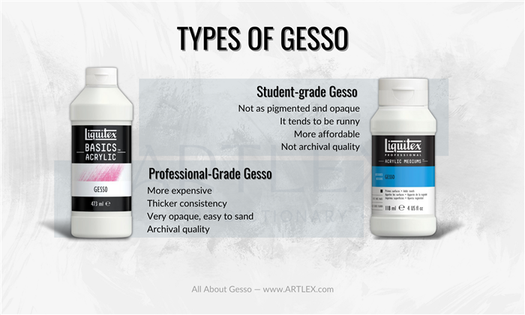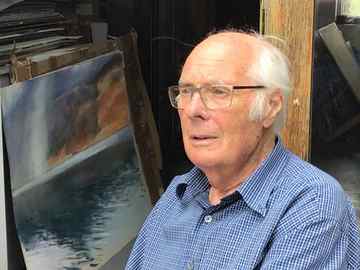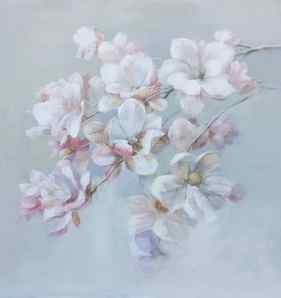The right white balance setting is crucial in woodland photography to accurately capture the natural colors of the scene. While many modern cameras have an auto white balance mode, it is always best to manually set the white balance to ensure accurate color reproduction.
Capturing the Beauty of Woodlands: Mastering the Best Camera Settings
Are you a photography enthusiast who loves exploring the magical world of woodlands? Or are you a keen photographer who struggles to make time for a dedicated photography trip in an exotic location, and are looking to start a photography project that will help you to grow as a photographer, without venturing far from your local area?
From the dappled sunlight filtering through the leaves to the rich colours of nature, capturing the essence of these enchanting landscapes can be a truly rewarding experience. To make the most of your woodland photography, it’s crucial to understand the best camera settings that will help you bring out the beauty of this natural setting. In this article, we will delve into the intricacies of camera settings for woodland photography, allowing you to create stunning images that truly showcase the allure of the forest.
The Art of Aperture
Aperture plays a crucial role in capturing the essence of woodland photography. By controlling the amount of light that enters your camera, you can manipulate the depth of field and create stunning effects. When photographing the intricate details of a woodland scene, it is advisable to use a smaller aperture (higher f-number) such as f/8 or higher. This will ensure that the foreground and background elements are in sharp focus, allowing you to highlight the intricate textures and patterns of the forest.
But don’t be afraid to experiment, either. Find an interesting-looking tree that you can shoot through the foliage of another tree using a large aperture (small f-number) with a prime lens, such as a 35mm, 50mm, or 85mm with an aperture of f/1.8. This will keep your focal point in focus, but produce a wonderful patchwork of washed colours across the scene. This works best in either spring or autumn, when the foliage is at its most vibrant.
A word of caution, though – where possible, avoid shooting at very small apertures (higher than f/16) because you will encounter diffraction. This is where the laws of physics impact the sharpness of your photo – everything will appear extremely soft, with even your focal point not being sharp.

ISO: Balancing Light and Noise
ISO determines the camera’s sensitivity to light. For woodland photography, a lower ISO setting is generally preferred to maintain image quality and reduce noise. Start with a setting of around ISO 100 or 200 and adjust accordingly based on the available light conditions. Remember, the lower the ISO, the less noise you will have in the final image, ensuring a cleaner and more detailed result.
With relatively modern cameras, I find I can achieve very low noise at settings up to ISO 1600 – and even ISO 3200 in some cases. But, if you use a tripod (which I would recommend), it’s best to stick to lower ISOs for the best image quality and to use as much of your camera’s dynamic range as possible.

Capturing the Essence of a Landscape by Gill Bustamante
One of methods I use to make my large landscape oil paintings is to go somewhere and then paint what I saw. However, I am not a traditional landscape painter. Instead I use a phrase I coined called ‘memory Impressionism’
Following are some photos taken from various places I have been and the paintings that were created very shortly afterwards. The first pair was made in Autumn 2018 after walk in the Glyndebourne area of East Sussex. Autumn colours were at their peak and the path shown in the photo was a bridleway that eventually became a steep path up onto the South Downs. I make the painting the next day after the walk and was fascinated to find how the colours and light and ancient trees and ivy bound trunks along with mottled light had impinged on me. It is called October Glows .


The next photo shows a scrubby woodland pond near Ardingly in Sussex on a frosty morning in December 2017. I did actually also see deer on this walk and have once caught a glimpse of a white deer in the same area but have never managed to photograph him. However, due to the wonderful power of artistic licence, I was able to make this painting which is called Ethereal .


Next is photo is of the reservoir near East Grinstead. It was a slightly misty day in January 2018 and a rookery of crows was in the trees behind me. I saw about 8 deer with one stag in the trees to the left and this led to the painting called Forest Dynasties


The next photo was taken in a forest near Bodiam castle in East Sussex July 2018. The painting itself reflects the the way I feel about dark forests. I find them beautiful and scary in equal measures. I find woodlands and forests have different atmospheres rather like houses do. Some intimidating, some benign. This forest as a painting became a metaphor for life for me and that is why I called ‘ Almost There ‘ as it sums up for me the barriers and freedoms and hope involved in trying to reach a goal.


The next photo was taken at the riverside in August 2018 near Fordcombe in Sussex. The resulting painting is called Summer Timewarp . The red bird was not present but should have been.


The final photo was taken in woodland near Turners Hill in Sussex. The colours and the ridge of high ground covered in leaves with a lake in the background (though not visible in the photo led to the painting. Deer added liberally because I just like deer. It is called Forest Souls .


It took me a while to realize what I was doing but it is basically quite simple. I have joined some walking websites where I download walks I can do in Sussex, Kent or Surrey as I am lucky enough to live near to all of them. I go on the walk, get lost, fall in cow poo, get splinters climbing styles, get chased by bulls and have many small adventures – most caused by having no sense of direction whatsoever and weak ankles.
Despite all that, however, I am absorbing the sights, sounds, smells and touch of the landscapes and wildlife I see. The interesting thing is that I never really know what I am absorbing until I get home and try to regurgitate some of it onto a canvas. This may not be a very flattering word for what I do but is appropriate as an analogy I think as I feel like I am consuming the things I see, digesting them a bit and then doing the regurgitating (so to speak).
I do use reference photos, especially for the wildlife bits, but the landscapes are always done from memory as this is how I get to see what was impressed on me during the walk. Inevitably, I do spot a lot of deer and crows woodland birds which I often paint but I also sometimes, for pure whimsy, will add a tiger or non-native UK bird just because they are the right colours to be in the place I painted (artistic license is fabulous) .
I have a theory that paintings are little universes created by artists. Paintings call to people just as a beautiful view does, or a glimpse through a window, or an abstract idea does. If you like a painting it is because it calls to something in you or takes you somewhere or simply just makes you feel some kind of emotion that you want to have repeated again and again. This applies to what I do as I love to see beautiful things and translate them into my own language via paint and present them to other people. The people who like my art are responding because there is some reality in it that they have also experienced or would like to experience. People who don’t like it simply have different realities and things they want to experience so I never take it personally when someone does not like my art as some other artist will appeal who is on the wavelength they need.
As always comments welcome!
Very best wishes, Gill
Artwork of the week: ‘Woodland Serenity’ by Amanda Horvath
Step into the serene world of Amanda Horvath’s acrylic painting “Woodland Serenity”. This captivating artwork transports you to a peaceful woodland scene in the Peak District. Amanda’s connection to nature shines through in this piece, capturing the woodlands essence.
In “Woodland Serenity,” you’ll find yourself immersed in a lush forest. Towering trees stretch high, casting shadows on the woodland floor. A distant glimmer of light adds a touch of mystery and hope to the scene. Her choice of the colour turquoise blue, a vibrant and optimistic hue, takes centre stage. Complementing the turquoise are warm copper and gold tones, creating a striking composition.
This original painting is created with high-quality acrylic paints on deep-edge canvas. The creative process begins with her careful observation and documentation of her natural surroundings, serving as the foundation for her work. She employs various techniques, including brushwork and impasto methods with a palette knife. Inspired by the techniques of impressionists and old masters’ styles.
“Woodland Serenity” blurs the lines between abstraction and realism, resulting in a contemporary artwork that speaks to the soul. The painting extends seamlessly around the canvas edges, therefore eliminating the need for a frame.
What inspired you to create “Woodland Serenity,” and why did you choose this particular woodland scene as your subject?
I think trees are so important in terms of the environment forming a natural habitat for birds and wildlife. Also they are a wonderful retreat from the stresses of everyday life. There are some lovely birch woods close to the studio that form the basis for many of my paintings. So I visit this place in all seasons and weathers and I’m always inspired by the textures and colours of the trees; The sights and sounds of nature and the movement of breezes rustling leaves.
My paintings are always rooted in some reality and my visual research forms the beginning structure for a painting. Then imagination, memory and an emotional instinct take over the creative process. I try to convey a peaceful quality in my paintings and I’m particularly drawn to working with turquoise and blue. Because traditionally they are healing colours with a connection to the spiritual world. On a more earthy level I’m especially fascinated with copper and how after a time it becomes that lovely turquoise. Copper and gold seem to naturally compliment turquoise and blue. I think the colours are beautiful and a lovely thing to bring into one’s home.
Your creative process involves a combination of observation and intuitive techniques. Can you walk us through the steps you took from initially observing the woodland to the final brushstroke?
I begin with walking outdoors and I’ll usually see something that interests me like a particular composition. The light falling a certain way or some beautiful colours in the bark or mosses and lichens growing nearby. So observation of the place is important and making notes in my sketchbook. I also have many drawings to refer to. I will take photographs, not to copy but as a way to take my mind back to the place when I’m in the studio, as so much of it is about the feelings of being in the forest. From these beginnings I work intuitively, painting some dark layers with a brush and then impasto techniques in layers using a palette knife. I’m influenced by the optical mixing techniques employed by the impressionists. They also painted with many marks to build a visual image that the eye mixes when viewed from a distance.
I usually work from dark to light and build the textures with gradually, increasing lighter layers of paint so that as the painting progresses. Dappled light and dark areas begin to form from the underpainting. Towards the end of the process I can make a decision whether or not to add any darker tones to accentuate the shadows.



